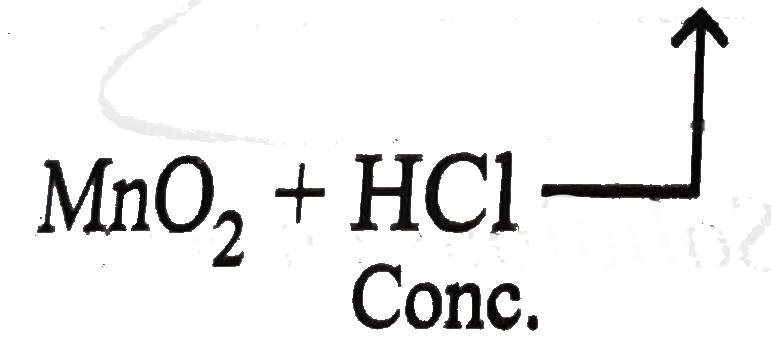A tetra-atomic molecule (A) on reaction with nitrogen (I) oxide, produces two substances (B) and (C). (B) is a dehydrating agent while substance (C) is a diatomic gas which shows almost inert behaviour. The substances (A),(B) and (C) are
P4,N2O5,O2
P4,P4O10,Ar
P4,P2O3,O2
P4,P4O10,N2
The correct Answer is:D
To solve the problem, we need to identify the tetra-atomic molecule (A), the dehydrating agent (B), and the diatomic gas (C) based on the given information.
1. Identify the Tetra-Atomic Molecule (A):
- A tetra-atomic molecule consists of four atoms. The most common tetra-atomic molecules in chemistry are phosphorus (P4) and silane (SiH4). However, phosphorus (P4) is more relevant in this context as it is known to react with nitrogen oxides.
Hint: Think about common tetra-atomic molecules and their chemical behavior.
2. Reaction with Nitrogen Oxide (N2O):
- The question states that the tetra-atomic molecule (A) reacts with nitrogen oxide (N2O). When phosphorus reacts with N2O, it forms phosphorus pentoxide (P4O10).
Hint: Consider the products formed when phosphorus reacts with nitrogen oxides.
3. Identify Substance (B):
- The problem states that substance (B) is a dehydrating agent. Phosphorus pentoxide (P4O10) is a well-known dehydrating agent, used to remove water from substances.
Hint: Recall common dehydrating agents in chemistry.
4. Identify Substance (C):
- The question indicates that substance (C) is a diatomic gas that shows almost inert behavior. Nitrogen (N2) is a diatomic gas that is known for its inertness due to the strong triple bond between the nitrogen atoms.
Hint: Think about diatomic gases and their reactivity.
5. Summarize the Findings:
- Based on the above steps, we conclude:
- (A) is P4 (phosphorus)
- (B) is P4O10 (phosphorus pentoxide)
- (C) is N2 (nitrogen gas)
6. Choose the Correct Option:
- Now, we need to match our findings with the options provided. The correct combination is:
- A = P4
- B = P4O10
- C = N2
Hint: Compare your answers with the options given to find the correct match.
Final Answer:
- A = P4 (phosphorus)
- B = P4O10 (phosphorus pentoxide)
- C = N2 (nitrogen gas)
The correct option is the one that lists A as P4, B as P4O10, and C as N2.
- A tetra-atomic molecule consists of four atoms. The most common tetra-atomic molecules in chemistry are phosphorus (P4) and silane (SiH4). However, phosphorus (P4) is more relevant in this context as it is known to react with nitrogen oxides.
- The question states that the tetra-atomic molecule (A) reacts with nitrogen oxide (N2O). When phosphorus reacts with N2O, it forms phosphorus pentoxide (P4O10).
- The problem states that substance (B) is a dehydrating agent. Phosphorus pentoxide (P4O10) is a well-known dehydrating agent, used to remove water from substances.
- The question indicates that substance (C) is a diatomic gas that shows almost inert behavior. Nitrogen (N2) is a diatomic gas that is known for its inertness due to the strong triple bond between the nitrogen atoms.
- Based on the above steps, we conclude:
- (A) is P4 (phosphorus)
- (B) is P4O10 (phosphorus pentoxide)
- (C) is N2 (nitrogen gas)
- Now, we need to match our findings with the options provided. The correct combination is:
- A = P4
- B = P4O10
- C = N2
- A = P4 (phosphorus)
- B = P4O10 (phosphorus pentoxide)
- C = N2 (nitrogen gas)
Similar Questions
AgCOP3+(A)→(B)+(C)+(D)

The substances (A), (B), (C ) and (D) are
View SolutionName :
(a) two substances which can sublime
(b) two substances soluble in water
(c) two substances insoluble in water
(d) four substances that can be used as filters.
View SolutionAlkaloids are
(a) Sour acidic substance
(b) Bitter basic substances
(c) Sweet neutral substances
(d) Tasteless ingredients
View SolutionOver small distances substances move by (A)____ and by (B)____ supplemented by (C)_____
View SolutionGive one use of each of the following substances :
(a) Iron (b) Brass (c ) Coal
View SolutionWhich metal produces hydrogen gas on reaction with cold water?
(a) Al
(b) Fe
(c) Pd
(d) Na
View SolutionWhen a substance A reacts with water it produces a combustible gas B and a solution of substance C in water. When another substance D reacts with this solution of C, it also produces the same gas B on warming but D can produce gas B on reaction with dilute sulphuric acid at room temperature. A imparts a deep golden yellow colour a smokeless flame to Bunsen burner. A,B,C, and D respectively are :
View SolutionIdentify A, B, C, D and E.
A white substance (A) reacts with dilute H2SO4 to produce a colourless gas (B) and a colourless solution (C).The reaction between (B) and acidified K2Cr2O7 solution produces a green solution and a slightly coloured precipitate (D).The substance (D) burns in air to produce a gas (E) which reacts with (B) to yield (D) and a colourless liquid. Anhydrous copper sulphate is turned blue on addition of this colouless liquid.Addition of aqueous NH3 or NaOH to (C) produces first a precipitate
View Solutionwhich of the following statement are not true ?
(a) Vacancy defect results in a decrease in the density of the substance
(b)interstitial defects results in an increase in the density of the substance
(c)impurity defect has no effect on the density of the substance
(d)Frenkel defect results results in an increase in the density of the substance
View SolutionWhen diemethyl glyoxime is added to the aqueous solution of nickel (II) chloride in presence of dilute ammonia solution, a bright red coloured precipitate is obtained .
(a) Draw the structure of bright red substance .
(b) Write the oxidation state of nickel in the substance and hybridisation.
(c ) State whether the substance is paramagnetic or diamagnetic.
View Solution
